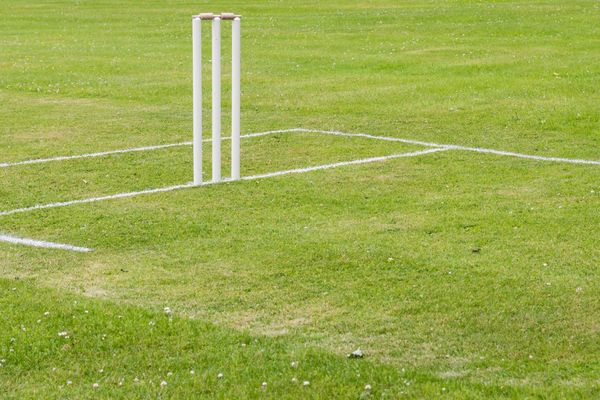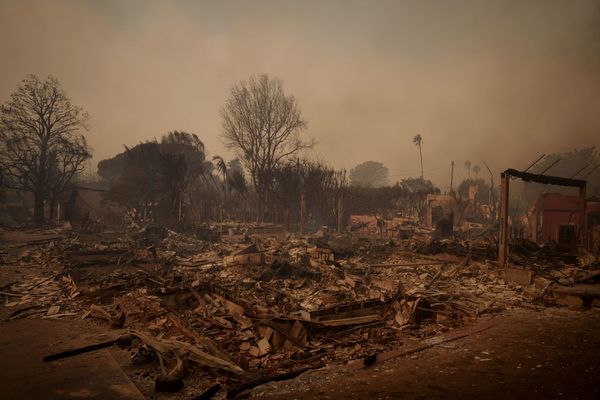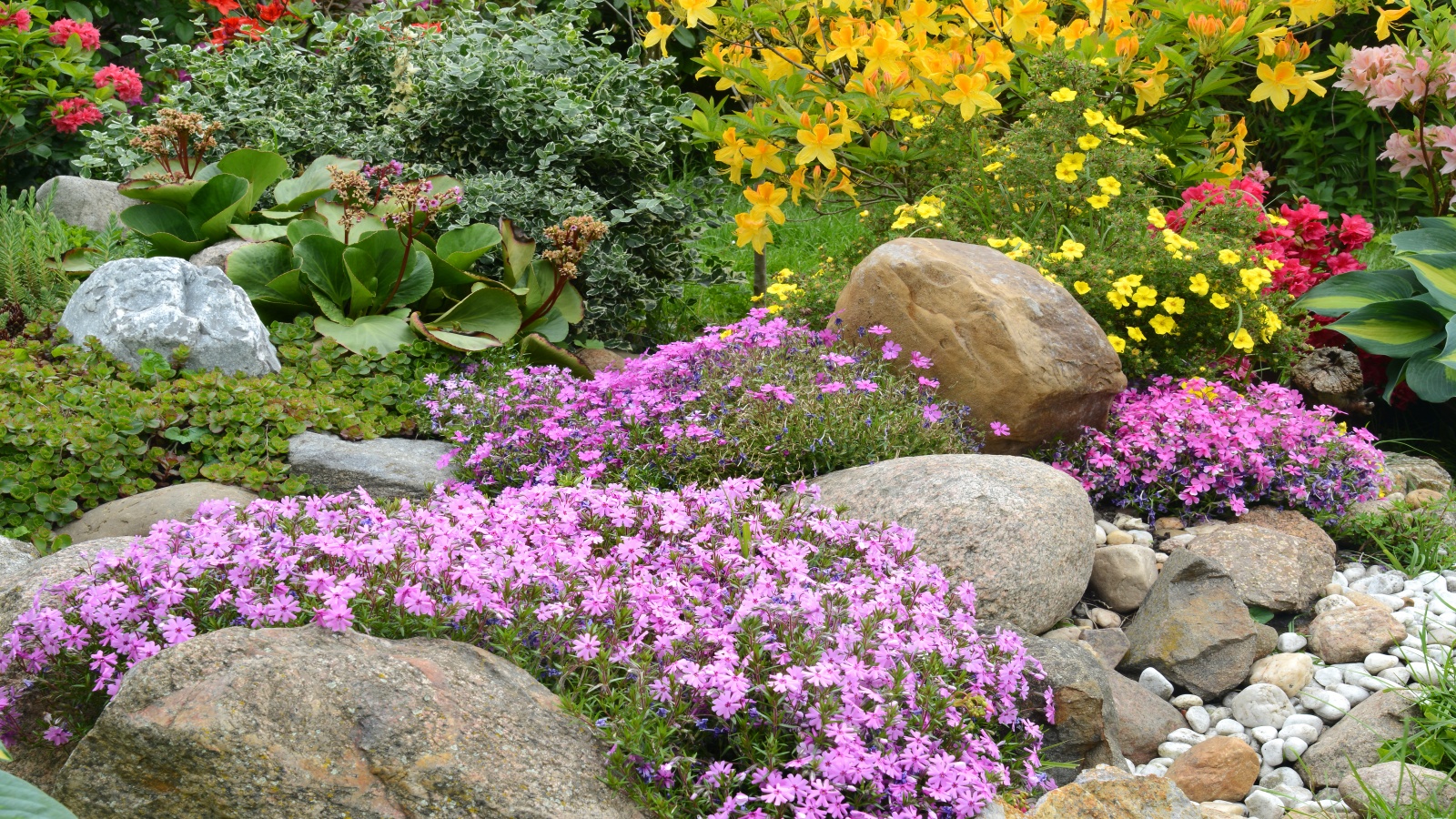
Rock garden plants are some of the toughest cookies in the backyard. Don’t be deceived by their relatively small size - these weather-resistant wonders can handle almost everything the elements throw at them and are as happy in containers as they are in the soil.
Rock garden plants are also low-maintenance, so are the perfect choice if your time is precious and you need something to create an easy feature.
They are often suited to coastal gardens where conditions can be harsh, and also create an effective feature in a gravel garden.
Rock garden plants hardiness
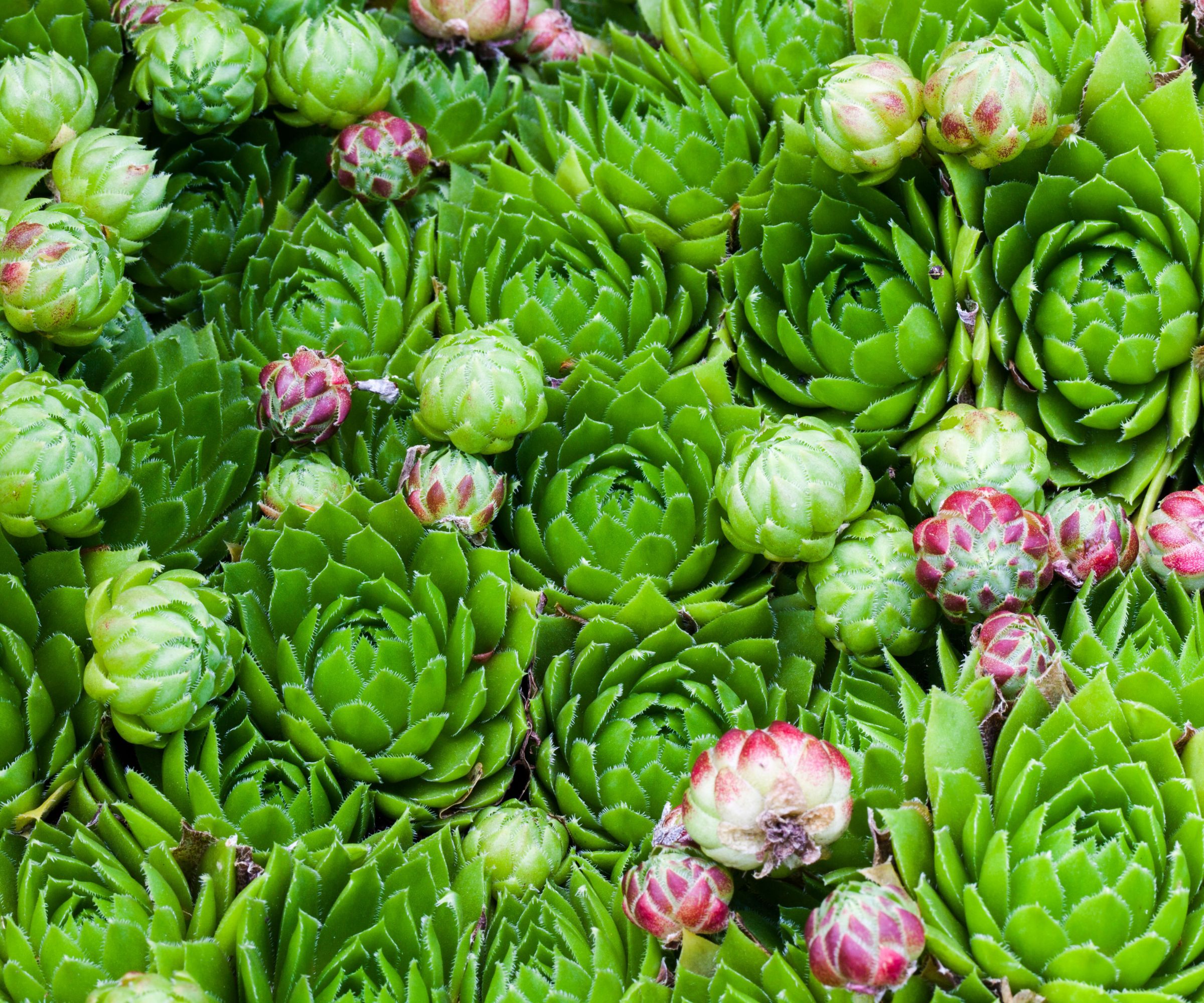
Always check the hardiness zone you live in before buying plants, to make sure they reach their full potential and aren't killed off by frosts, drought or waterlogging.
Hardiness zones are the 13 different ranges of climate that have been classified by the USDA according to the average lowest winter temperature recorded at weather stations across the country in the ten years up to 2020.
They vary from zones 1 and 2 in the far north, where temperatures can drop to as low as -50F making growing even the most cold-tolerant plants something of a challenge, to zones 10-13 in the very far south. Here, it may be too hot for almost anything to grow.
As well as a range of temperatures, you must also take into consideration humidity and rainfall, as many rock garden plants have evolved to survive extremes of cold and drought and don't always fare well when they receive too much moisture.
Benefits of growing rock garden plants
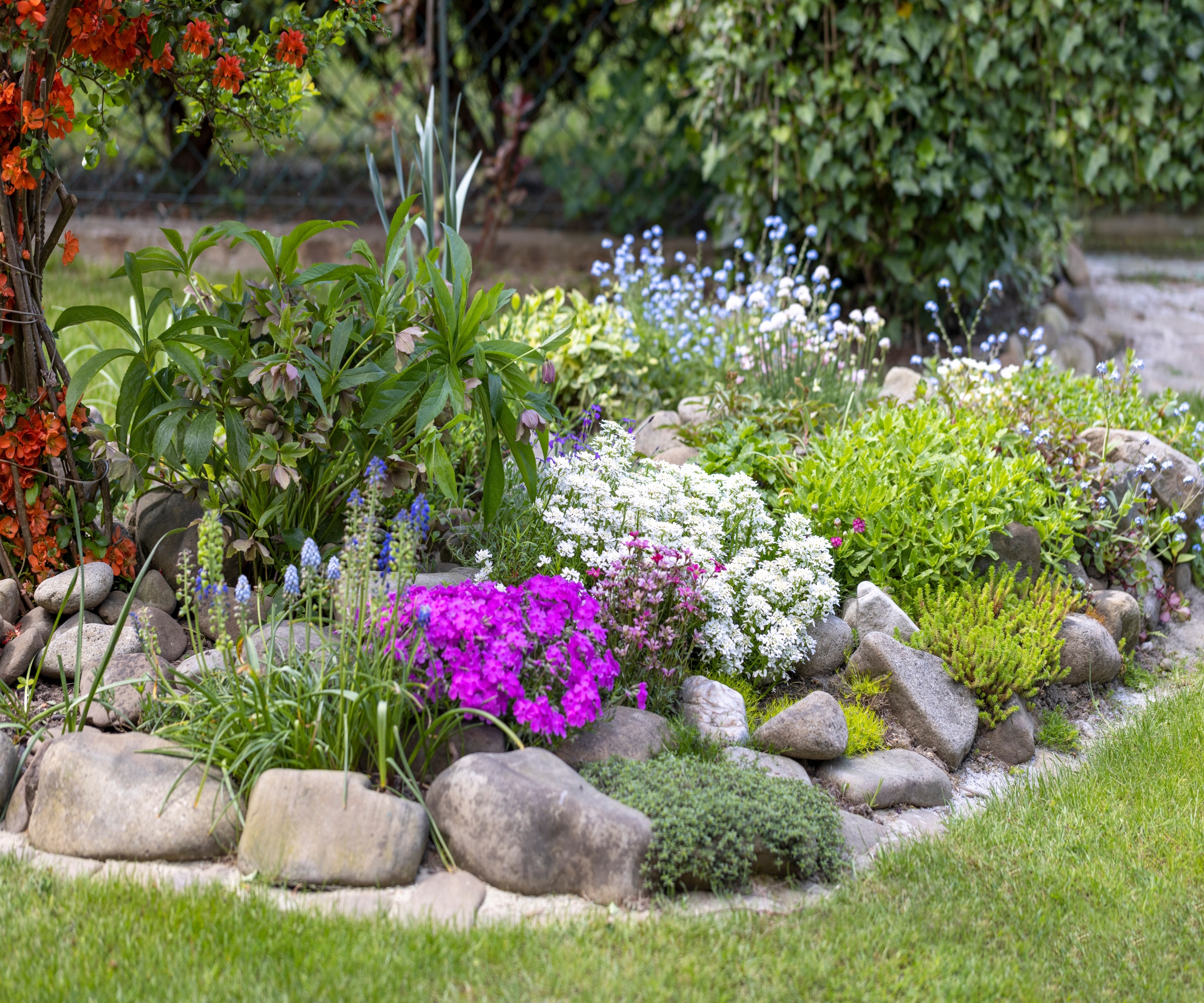
Rock garden plants are also known as alpine plants or rockery plants, and many of them originate from inhospitable mountainous regions where they are buffeted by extremes of weather.
This makes them perfect for resisting the increasing effects of climate change, and whether you choose succulents, cacti, dwarf bulbs or colorful ground cover plants, there is a variety to fill every space and location.
Fall and winter are the best seasons for building a rock garden because they are, relatively speaking, the quietest times of year in the garden. Add your plants in spring, when the soil is warming up but still damp from winter. This will give your alpines time to get established and grow through summer and fall before the cold, wet winter weather arrives.
Choose a site in your yard that gets plenty of sun and little shade, and avoid frost pockets where cold air gets trapped in winter. Now you're ready to select your plants, and these are 10 of the best that will thrive in a rock garden environment.
1. Aubrieta
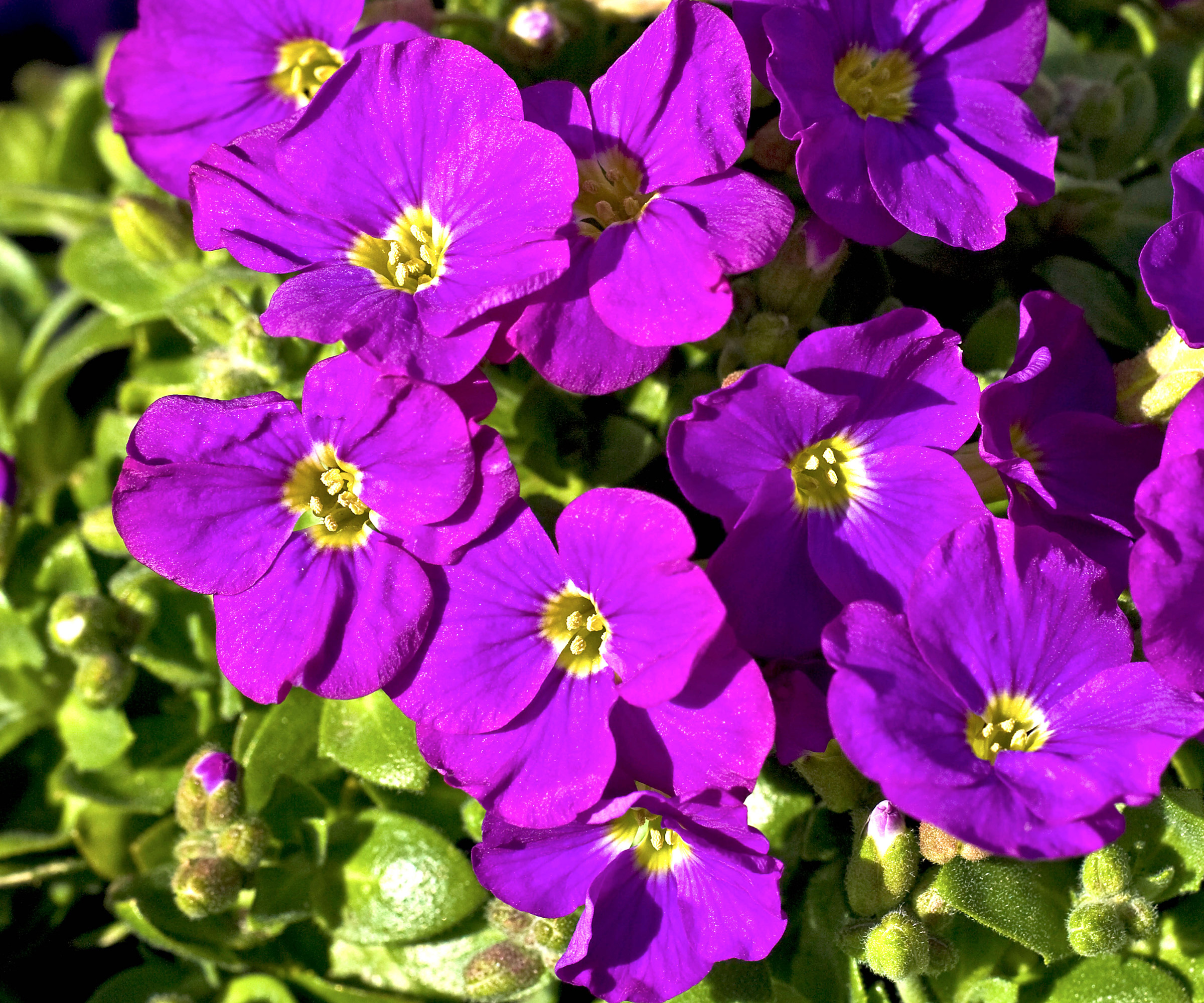
Aubrieta is a classic choice when putting together your rock garden ideas. It has a beautiful cascading habit and covers rock gardens and walls with mounds of flowers in shades of pink and purple.
This is a very low maintenance addition to any backyard or rock garden, and simply needs cutting back after they have flowered and started to sprawl to keep them neat. Water and fertilize with a high-potassium tomato feed and they should flower again.
Suitable for hardiness zones 4-8.
You can find aubrieta plants available from Walmart.
2. Sedum
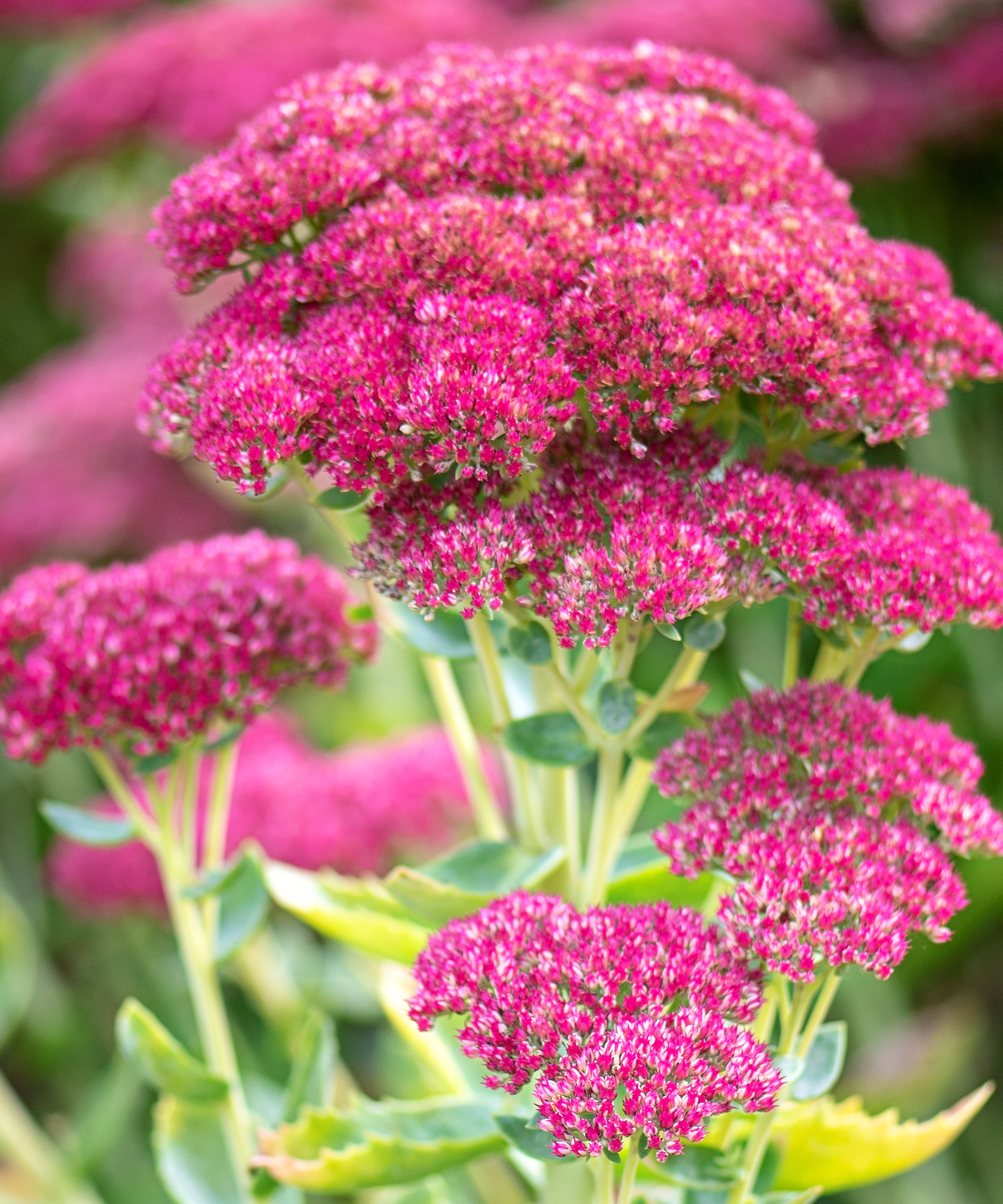
Sedum, also known as stonecrop and hylotelephium, are some of the best succulents to grow and are happy in the dry poor soils of a rock garden.
They have distinctive fleshy leaves in shades of green and burgundy which add an interesting texture to your planting ideas. Their pink flowers also bring colour to the yard in late summer and the fall, and are a vital source of late nectar for pollinators.
Most sedum are suitable for hardiness zones 3-9, though Hylotelephium ewersii or pink Mongolian stonecrop can tolerate conditions in zone 2.
You can find sedum starter plants available from Walmart.
3. Miniature bulbs
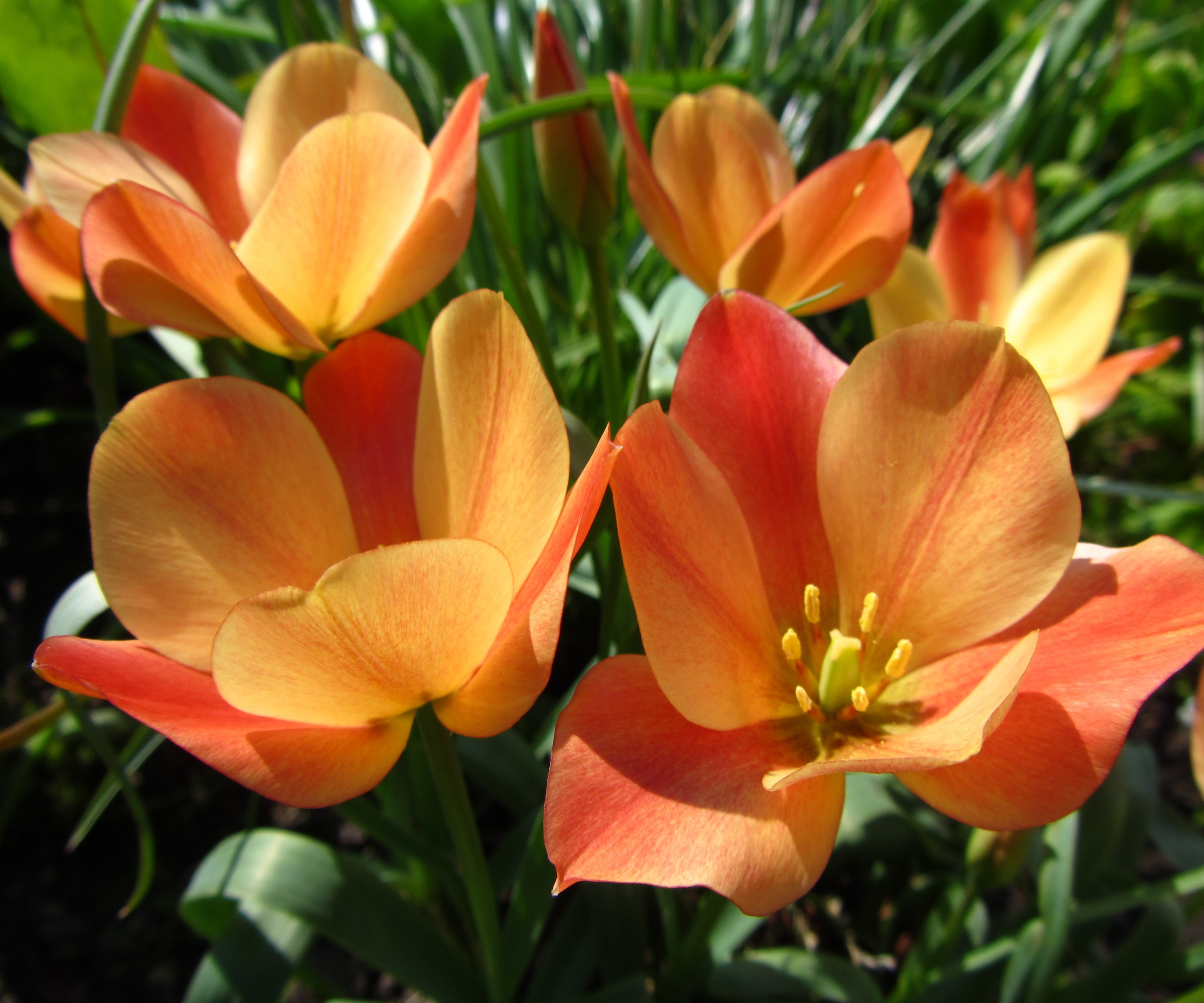
Bulbs are an easy way of adding colour to a rock garden through most of the year and will thrive in the free-draining soil that alpines need. Most will grow in a range of areas between hardiness zone 3 and zone 11.
Miniature bulbs are perfect, because they don't overshadow low-growing alpine varieties, and in summer you could grow dwarf dahlias such as the ‘Duet’ series or ‘Mignon’ which have striking dark foliage, or species tulips, which are suitable for US hardiness zones 3-8, also work beautifully.
Do remember though that dahlias are only hardy in zones 8-11, where they can be left in the ground all year with minimal protection. Elsewhere they will need lifting and winterizing in a frost-free place.
Bulbs that flower in the fall include nerines, which are cold-sensitive and only winter hardy in zones 9-11) and autumn crocus, which are hardy in zones 5-9. Able to cope with temperatures down to -10F, they need winter's chill to prompt flowering.
If you are looking for winter flowers, you should consider snowdrops, which grow best in zones 3-7 as they dislike humid conditions, yellow winter aconites (happy in zones 4-7) and hardy cyclamen which will grow in zones 4-7.
4. Sempervivum
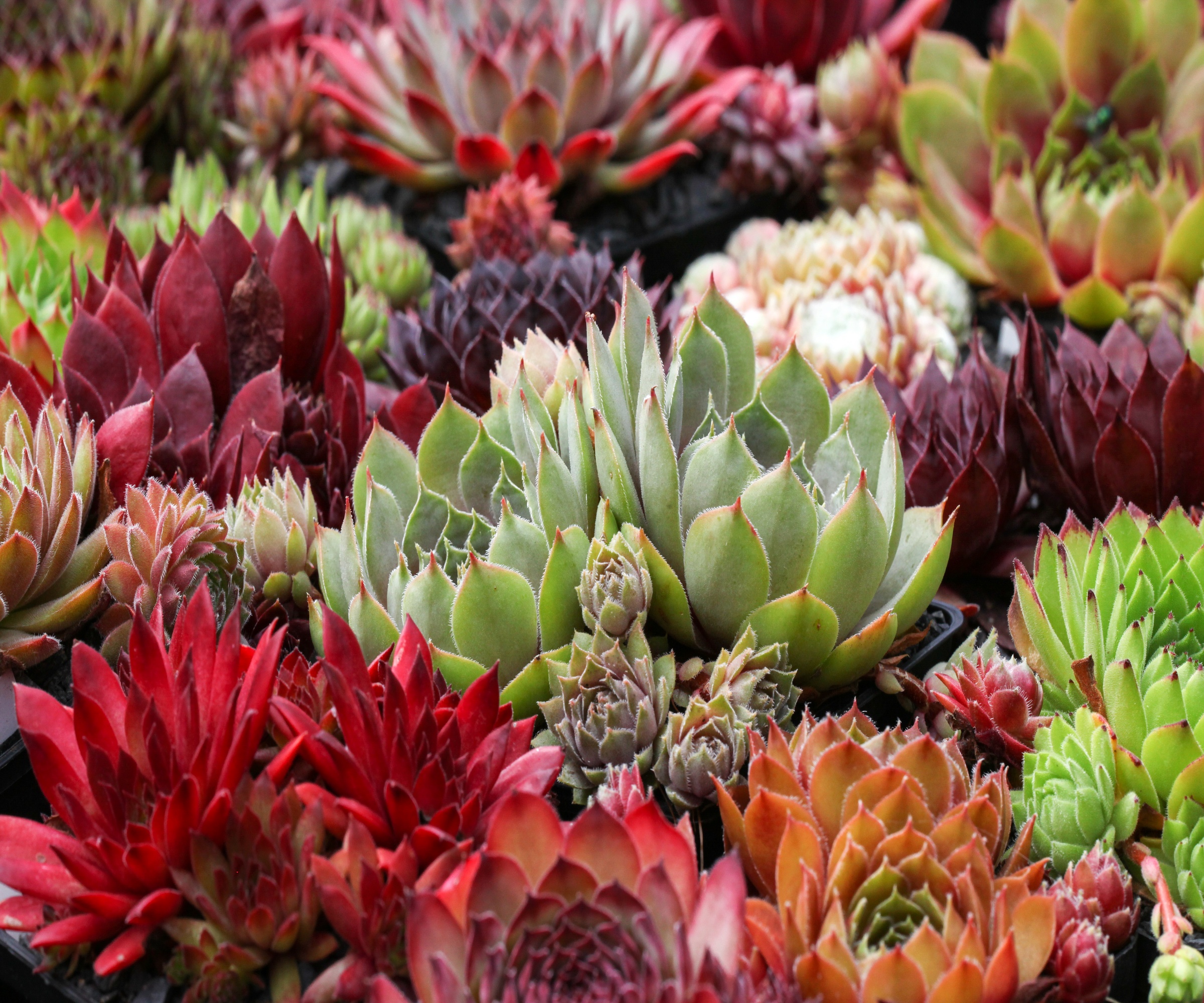
Also known as house leeks and chicken-and-hens, Sempervivum like full sun and create ground-covering mats of attractive fleshy rosettes in a range of shades.
They hail from the inhospitable sides of mountains, which makes them easy to care for through winter, and look attractive planted with sedums and other low-growing plants.
As they grow they create excellent areas of ground cover, which helps hold the soil together and prevents moisture evaporating.
Sempervivum are suitable for hardiness zones 3-8.
Succulents and cacti plants are available from Walmart.
5. Conifers
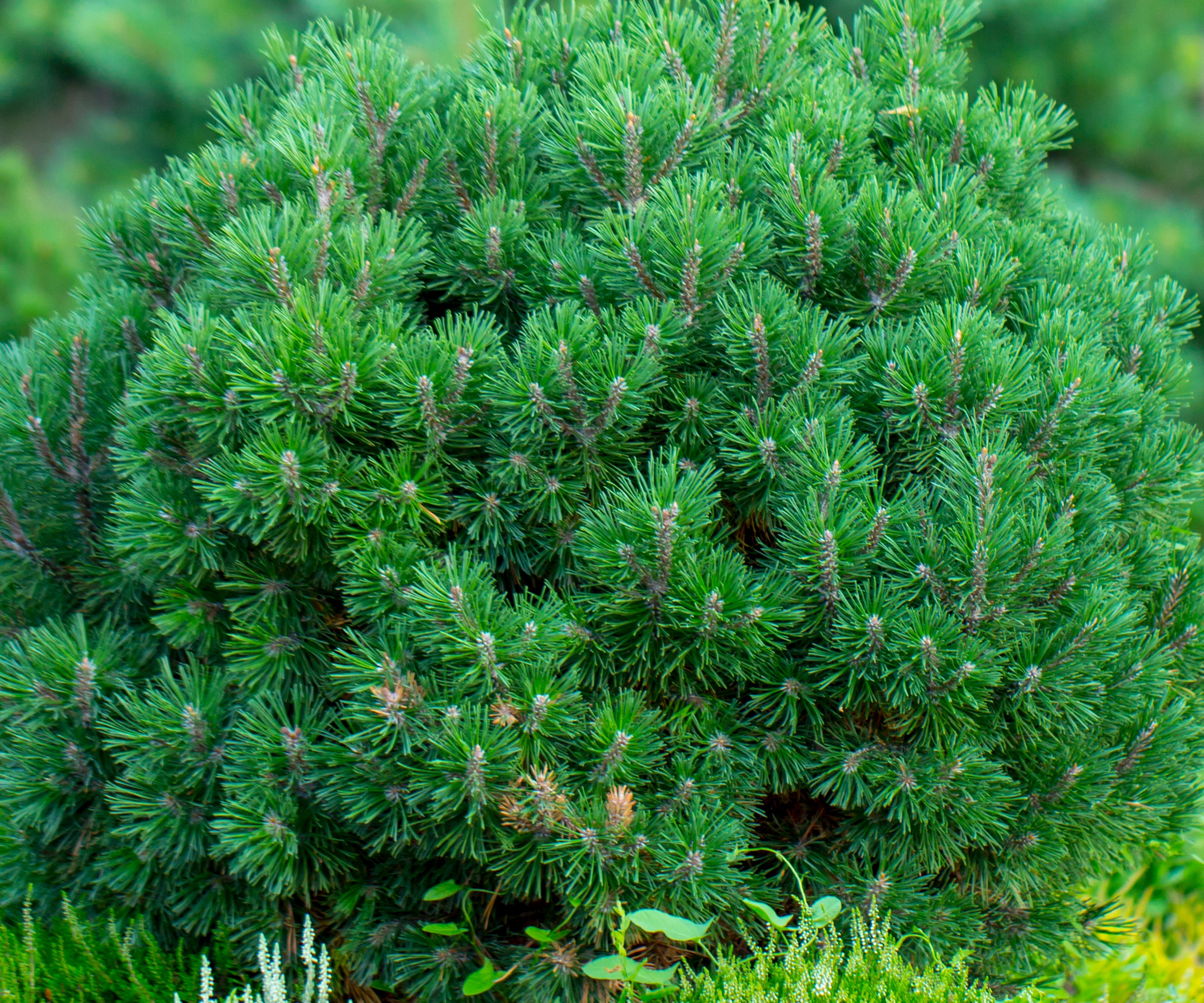
Conifers are often included in rock garden ideas because they add height and a focal point, while the prostrate, spreading varieties can be used as ground cover.
You can achieve height and contrast in your rock garden with evergreen conifers, such as Chamaecyparis 'Blue Moon', which has attractive steel blue foliage.
Juniper ‘Gold Cone’ is also an attractive choice, which has foliage that starts gold but matures to an attractive rich green, and the slow-growing dwarf mountain pine Pinus mugo 'Gnom'.
Conifers are extremely hardy and can tolerate the cold, though they do less well in the heat and humidity of southeast US, and can also suffer in desert conditions.
6. Pinks
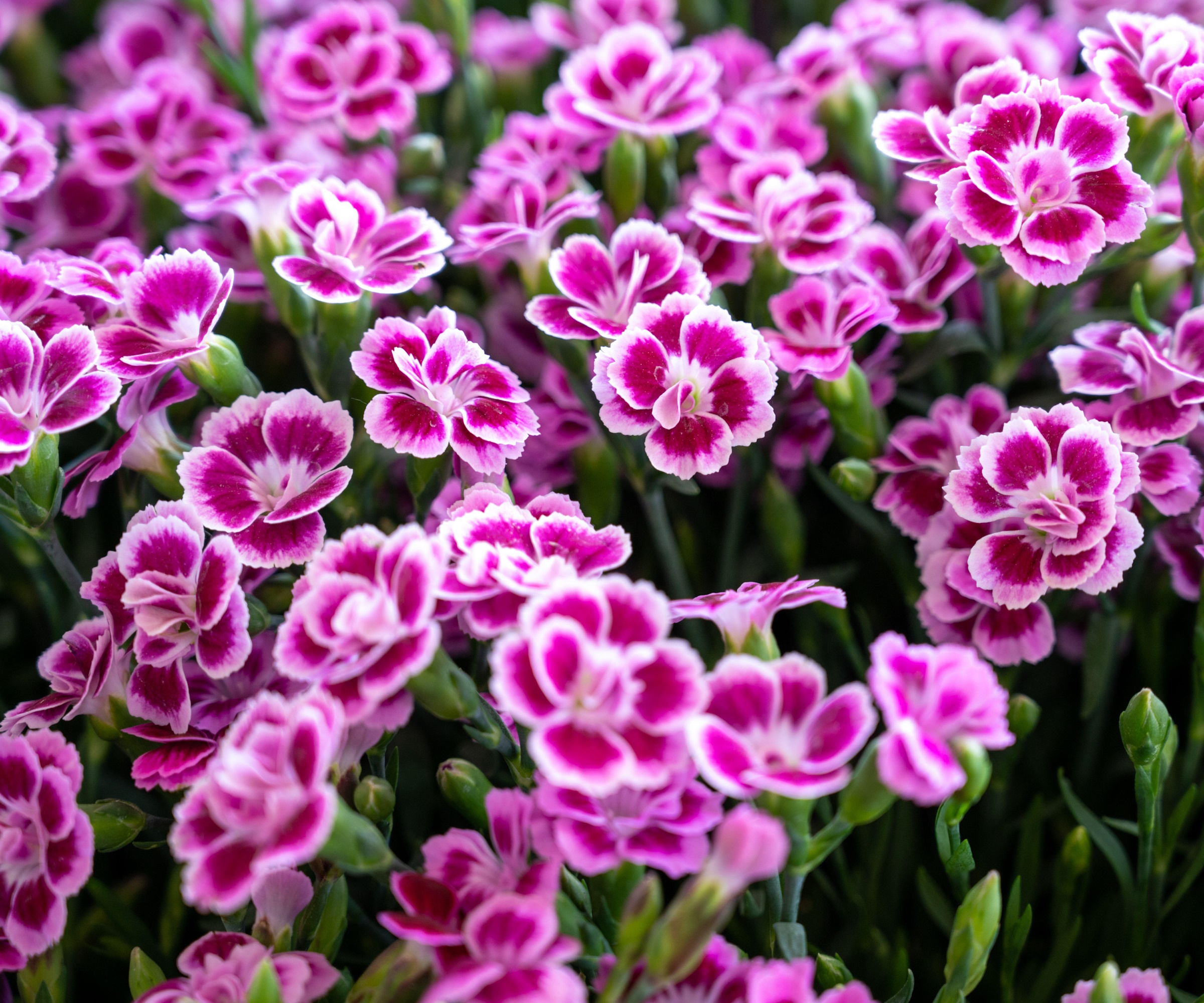
Dianthus live up to their common name of ‘pink’ by providing a wealth of pretty pink flowers in a range of shades. Their blooms help break up the sometimes more restrained colours of a rock garden and soften the edges of the rocks.
They have an attractive clove-like scent and restful grey-green foliage and are a magnet for pollinators. Dianthus are also easy to propagate via cuttings or layering.
Dianthus can tolerate a range of hardiness zones and are grown as perennials in zones 10-11, and as annuals in zones 9-3.
Dianthus starter plants available from Walmart.
7. Herbs
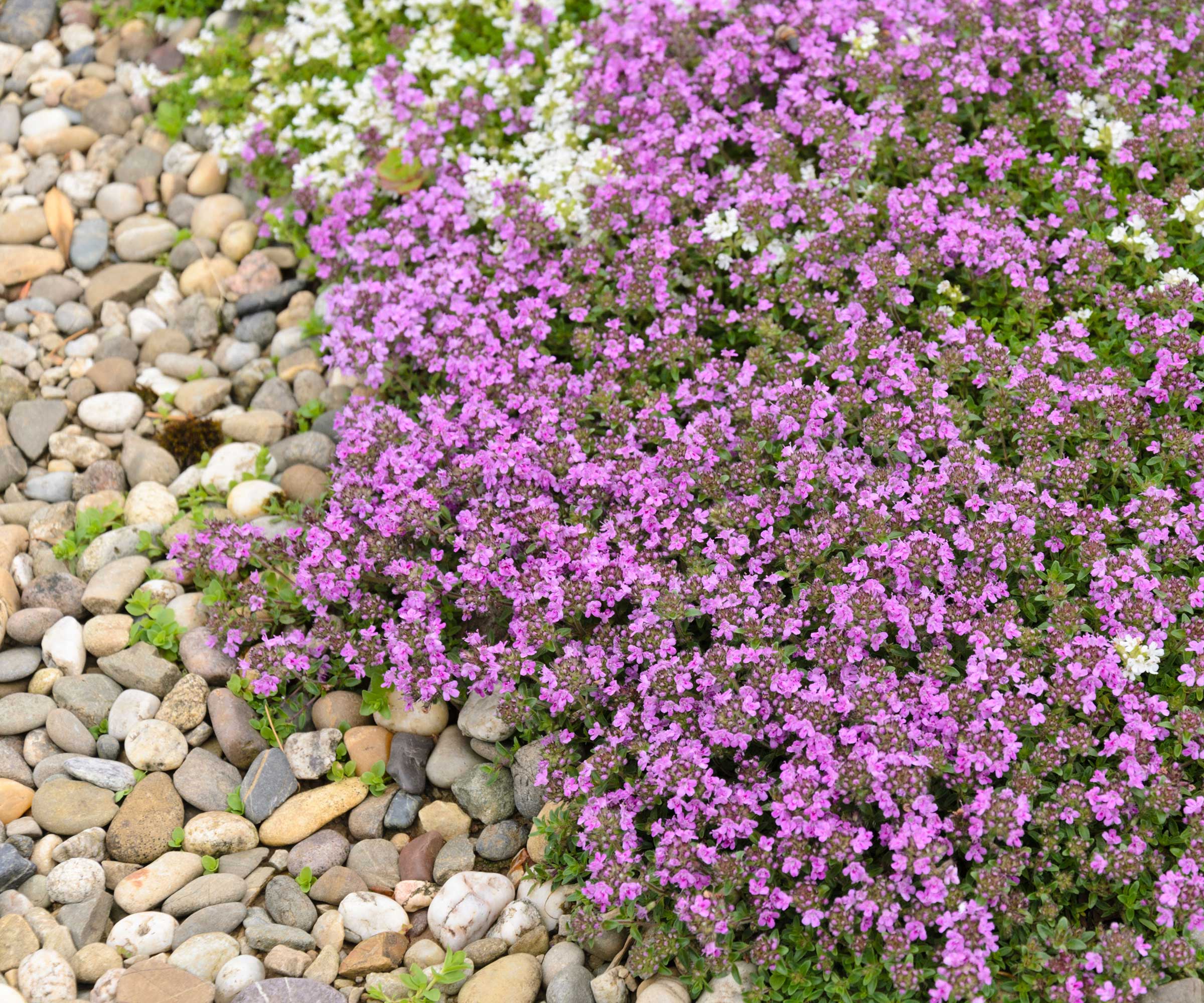
Add scent and culinary convenience to your rock garden with aromatic herbs such as creeping thyme, rosemary, lavender and sage.
Or why not try some of the more unusual herbs such as borage or hyssop, and turn your rock garden into even more of a talking point?
Easy to grow, care for and propagate, herbs are also hugely beneficial for pollinators.
Herbs grow in a wide range of hardiness zones, and some of the most common rock garden varieties are safe in zone 5 (sage, thyme, oregano, lemon balm) and zone 8 (bay laurel, rosemary and lemon verbena).
8. Hardy geranium
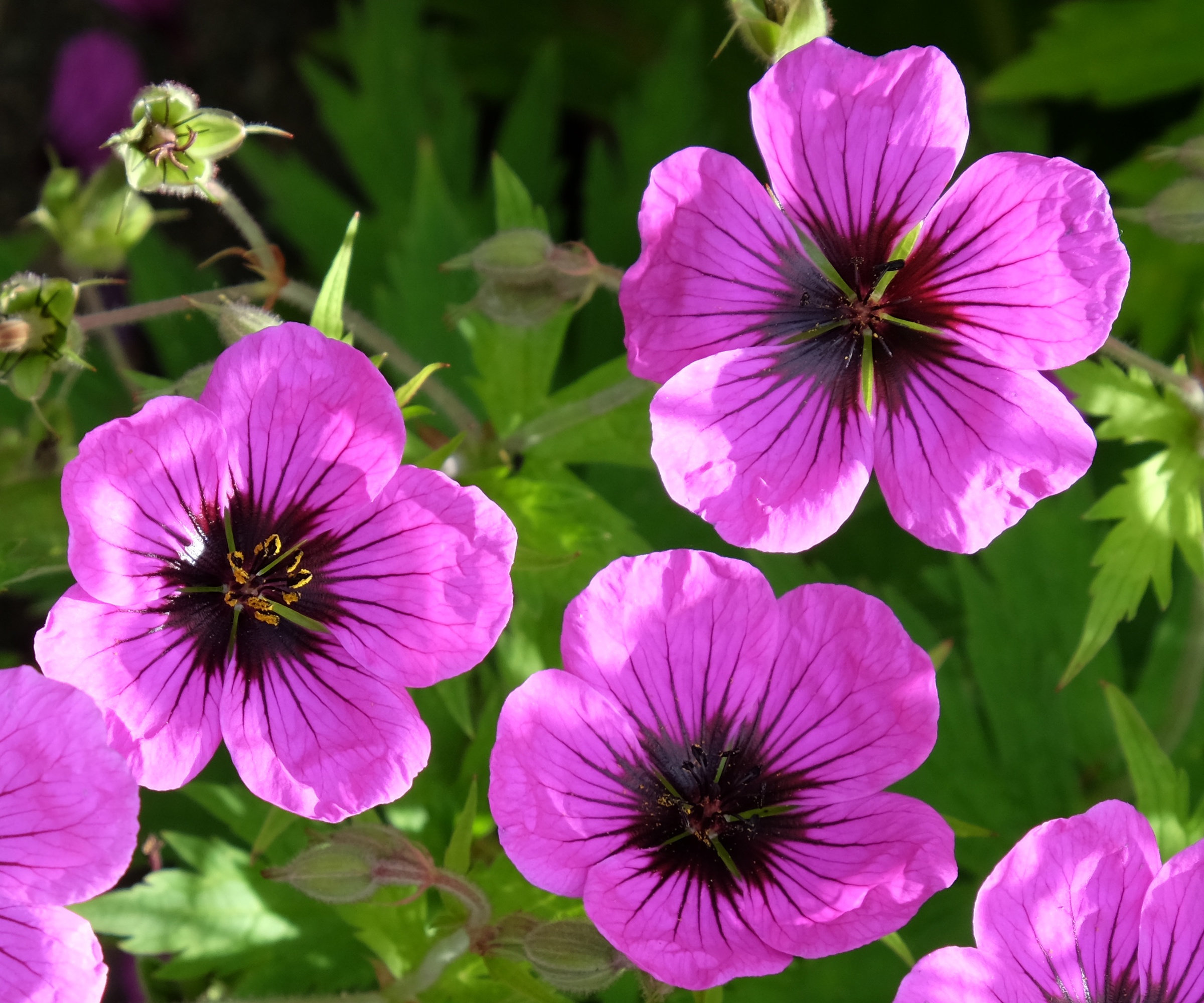
Hardy geranium, or cranesbill, is a mound-forming perennial with pretty flowers in a range of pinks, purples and blues. They are able to survive and thrive in hardiness zones 4-8.
Easy to grow, they are excellent ground cover plants which help to trap moisture in the soil, and soften the hardest edges of your rockery.
You should prune them back after they have flowered, and they will produce a second flush of colour before the fall.
You can find hardy geranium plants available from Walmart.
9. Pasque flower
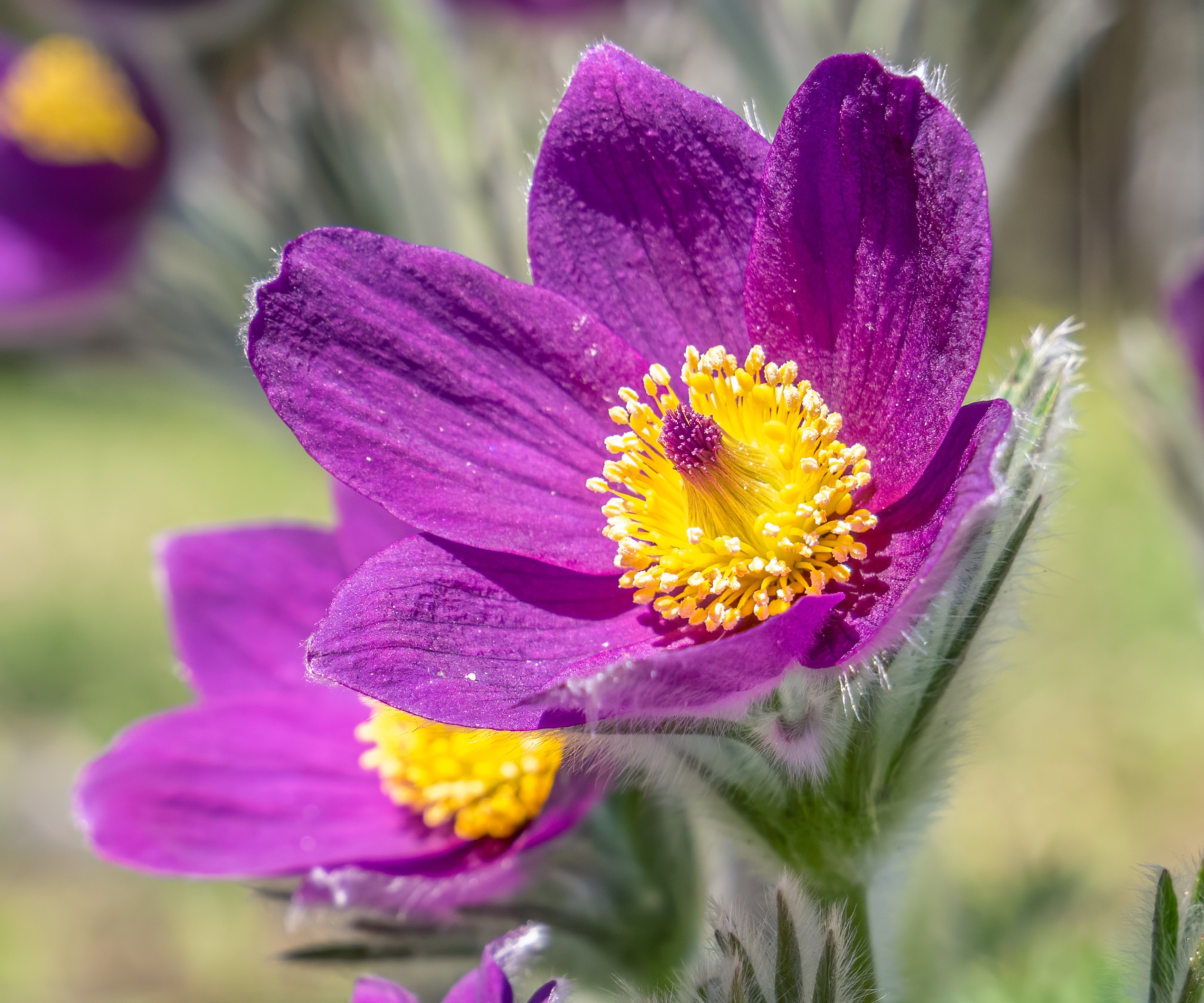
Pulsatilla vulgaris, or pasque flower, is a beautiful spring bloomer with traditional associations with Easter.
The buds unfurl to show a silken purple bloom above delicate foliage. Grow in a sunny spot with free-draining soil, though they will also tolerate light shade.
They can cope with full sun in hardiness zones 4-6, but will need light shade in the hotter and more arid zones 7-8.
10. Candytuft
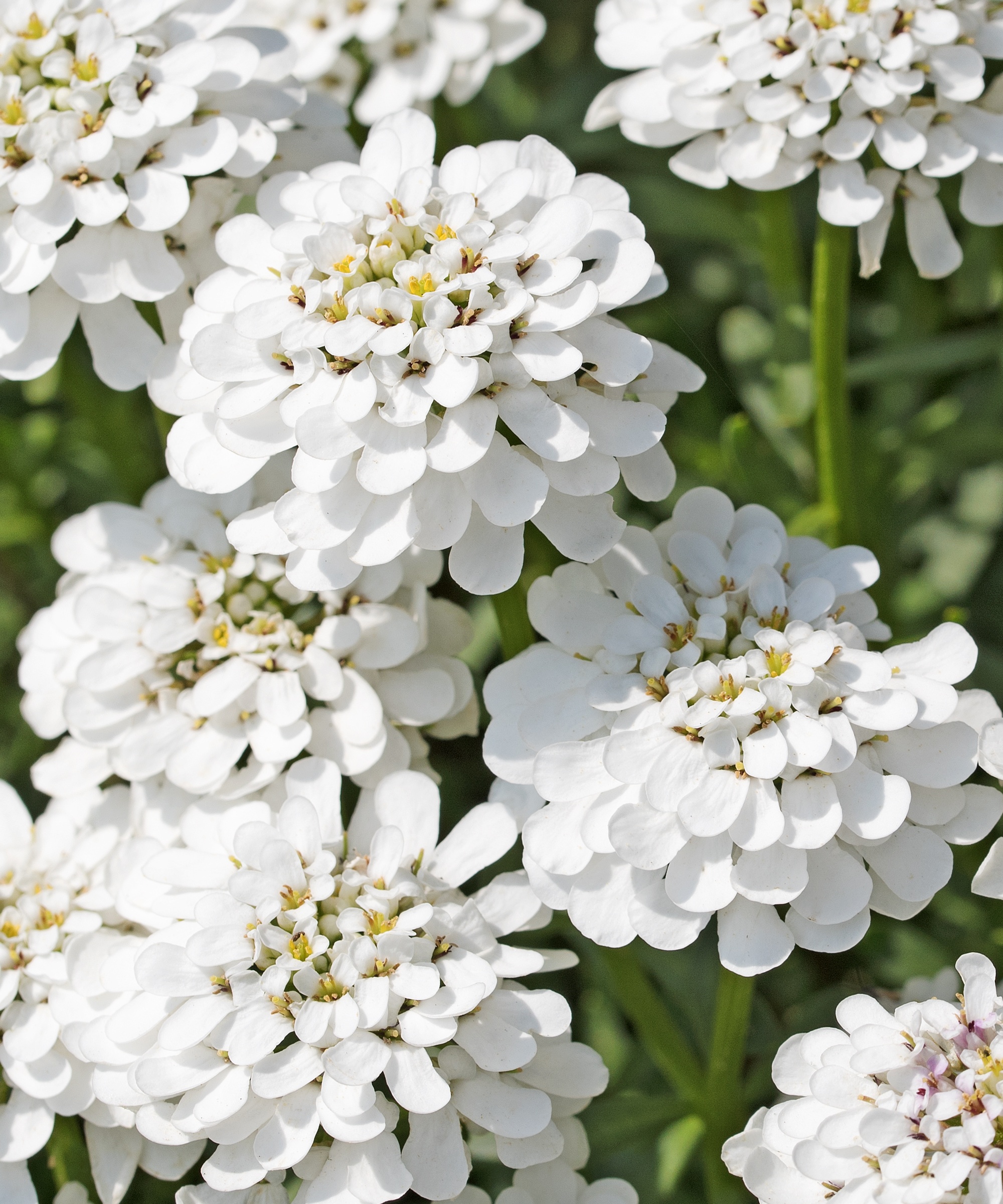
With its clumps of pristine white flowers set above vibrant green leaves and its need for full sun, perennial candtytuft (Iberis sempervirens) is an easy-going must-have for a rock garden.
It is native to the Mediterranean so are at home in dry, gravelly soils which makes it an excellent rock garden plant.
Candytuft behaves differently depending on the hardiness zone it is growing in. Although the plant is hardy in zones 3-9, in warmer areas it acts as an evergreen, in slightly cooler zones it is a hardy perennial and may die back in the fall, whereas in the most northerly areas around zone 3 it is usually treated as an annual and discarded in the fall, or lifted and winterized in a frost-free spot.
How to feed and water rock garden plants
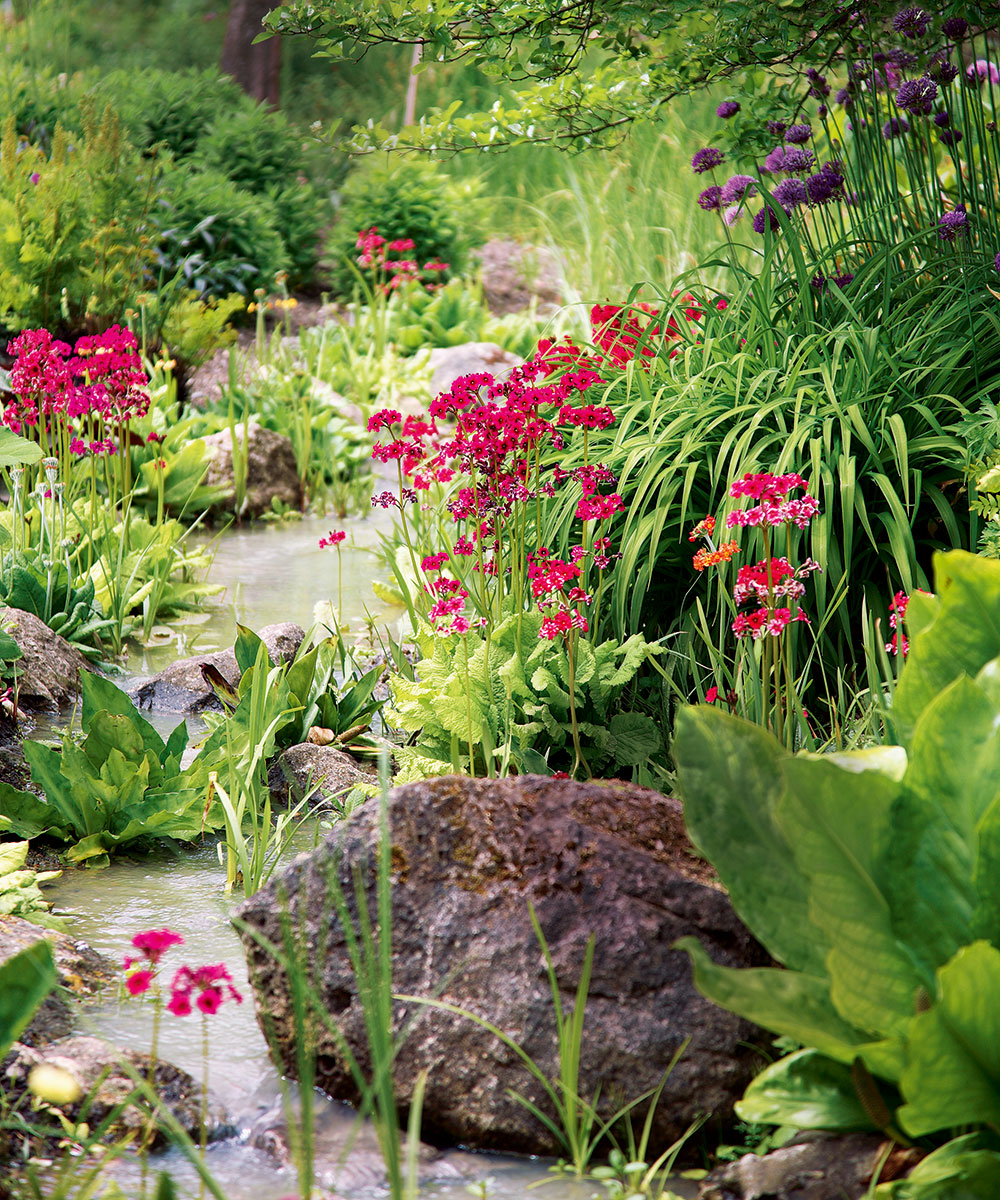
The main requirement of rock garden plants is free-draining soil that doesn’t get waterlogged.
When planting in the soil, weed the area thoroughly and enrich the soil with generous quantities of well-rotted compost or leaf mulch (also known as leaf mold), which will help drainage. Because many alpines hug the ground, they need soil that loses water quickly so their lower leaves don’t rest on damp earth and start to rot.
If you live in a hardiness zone that gets a lot of rain, one way of solving the problem is to cover the soil with a layer of gravel or shingle , which lifts the leaves off damp soil and helps to keep them safe.
You also need to be even more on the ball with weeding than usual, because weeds grow faster and taller than alpine plants and can soon swamp them.
Rock garden plants need to be watered regularly after they have been planted to encourage strong growth and establishment, but after that you only need to water sparingly as their roots will grow deep and search for their own moisture, and too much wetness can cause the lower leaves to rot.
Fertilize your alpines with a general-purpose granular plant feed in spring - Jobe's Organics fertilizer from Amazon would be ideal for the job.
FAQs
What are the best landscaping materials for a rock garden?
If possible try to use stones that occur naturally where you live, but always buy them from a reputable stonemason or quarry, never take them illegally. If you can use salvaged or second-hand stone, this is even better as it does not further deplete the earth’s resources.
What is the best mix of potting soil for a rock garden?
Good drainage is key, so whether you are adding a rock garden to your yard for planting a container, aim to create a mix that is one part loam, one part leaf mould or coir and one part grit.
Once you have created your rock garden or container, you will have an attractive, low-maintenance space in your backyard or on your patio that you can enjoy all year round. Rock garden plants behave no differently to any other perennial, so they need deadheading when their flowers fade and cutting back to keep them tidy and healthy.


